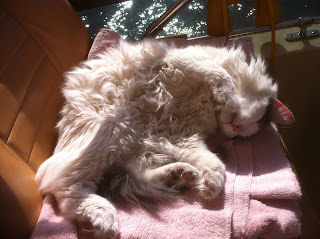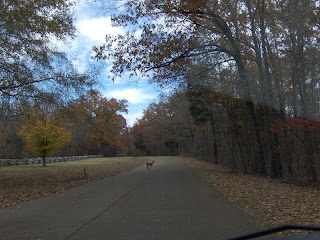Back about 1792 in north Mississippi, French explorer Marquis De Montcalm and several other guys climbed into their boat and headed back to the fort. They had just had a bad time with some Indians. But the water in the Tombigbee River was so shallow that Marquis had to dump some of his valuable cannons overboard to keep their boat from getting stuck.
Thoroughly ticked off and madly scratching a jillion mosquito bites, he fired off a letter. He told the King that if France was really serious about taking over the New World, he had better be thinking about how to connect the Tombigbee with the Tennessee River.
Eventually, a survey was made to check out Marquis' idea. The only result was a lot of talk. Many years later, the Feds really got serious, particularly after the project was authorized by Congress in the River & Harbor Act of 1946. That set off a big harangue about whether the project would be worth the cost.
But in May, 1971, The Army Corps of Engineers got the green light on the still controversial project, began digging and building it's way toward some awesome statistics. More dirt was moved to build the Tenn-Tom than was moved to build the Panama Canal. Finally, in June of 1985, the ribbon was cut and the 450 mile Tennessee-Tombigbee Waterway was open for business.
We left on November 16th, for a 10 day trip down the Tenn-Tom. Water from a whopping 20,000 square miles, drains into the Tennessee-Tombigbee. Spring rains can push the river far higher than it's normal summer level.
The Waterway, tidal all the way up to Coffeeville Lock & Dam, is intriguingly remote. In places, if you scrambled up the bank, you'd have to walk for miles to find a paved road. After long days, we anchored in remote creeks, with barely room for us to squeeze into.
There are stories about local folks taking pot shots at passing yachts. We didn't really believe it, but made sure we didn't wake the local fishermen. If they got mad, they could easily reach their truck and meet us at the next lock, if they wanted to.
Some of the small marinas were very remote, like Pirate's Cove in Pickensville, Alabama. Some of the boats here are locked in with floating vegetation and look abandoned. We left the next morning.
The highlight of this area was Bobby's Fish Camp. It's not really a camp, but there are some trailers and a cluster of houses on stilts.
And did I mention there is a floating dock, enough room for three.
This was a nice quiet place. Hunters dressed in camouflage, came in to get fuel for their small boats throughout the afternoon. They were friendly. Y'all come back now!
As it was nearly dusk, gunshots off in the distance, we decided to walk up the hill for dinner with our friends on the boat "Krazy Kru." Bobby, now deceased, has left his daughter to fry mounds of catfish to a full house of locals. We were the only foreigners.
We woke up to fog and 34 degrees. There was frost on the dock and the boat.
A cold mist was rising above the river and we decided to hang out a few more hours.
Good thing we waited. The top of towboats with barges could be seen going down river through the fog.
Two days later we entered our last lock on the Great Loop, the Coffeeville Lock & Dam. To our amazement, we were locked in with a towboat and barges. This had never happened to us before.
We felt it was fitting, to finally share this last lock with a towboat.
We pulled into the port city of Mobile, Alabama on November 26th under a threatening sky.
It's nice to be back in the big city again.
We entered Dog River Marina off of Mobile Bay on the Gulf of Mexico.
Now we can start talking about coming home to Florida!























































